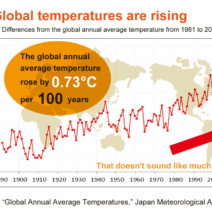Hawaii, an archipelago embraced by the warm embrace of the Pacific Ocean, often epitomizes the concept of paradise in the minds of many. Its turquoise waters lapping against sun-kissed shores create an inviting canvas, but beneath this idyllic exterior lies a complex tapestry of climatic nuances that can impact residents and visitors alike. In this exploration, we shall traverse the realms of Hawaii’s climate—deciphering its meteorological poetry and discerning whether it indeed lives up to its paradisiacal moniker.
As one journey across the islands, an enchanting panorama unfolds, revealing a diverse climate that is anything but monolithic. This diversity arises from the islands’ geographical variances—each island embodies its unique climatic character shaped by distinct topographies and altitudes. Hawaii boasts everything from arid deserts to lush rainforests, offering a smorgasbord of climatic experiences. Yet it is crucial to delve deeper than the superficial allure of sunshine and sandy beaches.
To better understand Hawaii’s climate, one must first confront its captivating yet contradictory features. The tropics, with their balmy breezes and abundant sunshine, suggest an eternal summer. However, the reality of Hawaii’s weather is fickle, often oscillating between delightful serenity and tempestuous storms. The islands primarily enjoy a tropical climate, categorized into two primary seasons: the dry season (kau) from May to October and the wet season (hooilo) from November to April. However, regional variations render these seasons a mere outline in the broader narrative of Hawaiian weather.
On the windward sides of the islands—exposed to the trade winds—the verdant landscape flourishes, blessed by frequent moisture that nourishes lush foliage. Conversely, just beyond the rain shadows, the leeward coasts present starkly different conditions: arid and often languishing under the powerful glare of the sun. This phenomenon elegantly illustrates the duality of Hawaii’s climate, allowing for a Jacob-in-the-Box experience of transitioning between oppressively humid rainforest and the crisp, sun-drenched coastal landscapes.
Yet, the unpredictable nature of rainfall in Hawaii adds layers of complexity to the climate. Rain might serenely sprinkle a beachgoer’s picnic one moment and whisk away the sunshine the next. The islands, particularly on the Big Island, boast some of the wettest and driest locations in the world—an enigma where, within mere miles, one can witness radically varying meteorological conditions. The term “microclimates” is pivotal in understanding Hawaii’s weather; small geographic areas can exhibit distinct weather patterns that can change abruptly. For the unprepared visitor, a sunny morning could swiftly transmute into a downpour, reminding them that the islands are alive with unpredictable energies.
Beyond the temporal rhythm of the weather lies the influence of climate change—a burgeoning concern that looms over Hawaii. As global temperatures rise, the islands experience a chain reaction of environmental shifts. Sea levels inch upward, threatening the very shores celebrated in postcard depictions. The delicate balance of ecosystems faces upheaval, with increased heat altering rainfall patterns and fostering adverse weather incidents. These transformations alter not only the landscape but also the cultural fabric, impacting agriculture, fisheries, and the livelihoods of local communities that have harmoniously coexisted with the land for centuries.
In the face of such realities, it is essential to foster a connection with the islands that goes beyond the allure of sunbathing or surfing. An understanding of Hawaii’s climate encourages a deeper appreciation for its intricate ecosystems, where each drop of rain and ray of sunshine serves a purpose. One may begin to comprehend the profound significance of the Hawaiian concept of “malama ‘aina,” which translates to “to care for the land.” By engaging with these energies thoughtfully, visitors can relish a genuine embrace of Hawaii’s multifaceted appeal, enhancing their experience and fortifying bonds with the community.
Many will forever associate Hawaii with its idyllic beaches, as they bask beneath brilliant blue skies awash in golden sunlight. However, achieving an authentic Hawaiian experience necessitates an acknowledgment of the islands’ environmental intricacies. The climate, composed of a delicate equilibrium of sunshine, rain, and temperature, serves as a reminder that the beauty of Hawaii is not simply confined to picturesque vistas. It invites exploration of the hidden gems within its vast interior—towering green mountains, cascading waterfalls, and rich agricultural lands that revel in every droplet of rain.
In conclusion, to perceive Hawaii solely as a paradise of eternal summertime is to miss the essence of what the islands truly offer. The climate weaves a tale of contrasts, shaping not only the land but its inhabitants as well. Understanding this picturesque yet complex climatic landscape enables deeper engagement with Hawaii, urging a celebration of its beauty while staunchly advocating for its preservation. While paradise weather exists, it remains a nuanced narrative echoing the intricacies of nature. By exploring and advocating for sustainable practices, one can contribute to the enduring legacy of Hawaii—ensuring that its climate continues to enchant and uplift generations yet to come.


